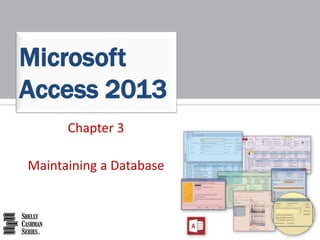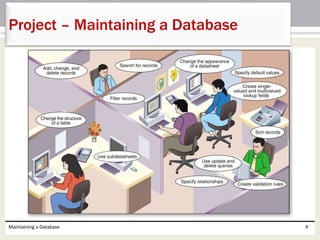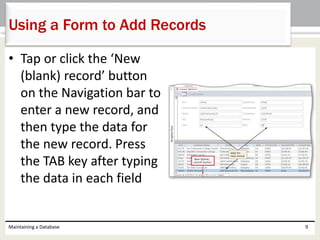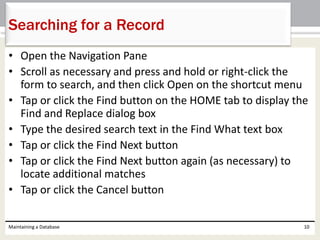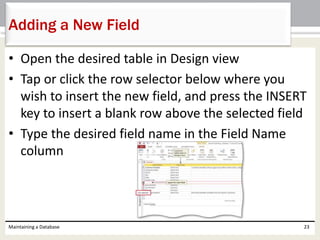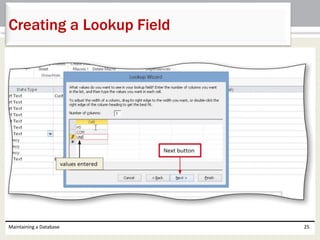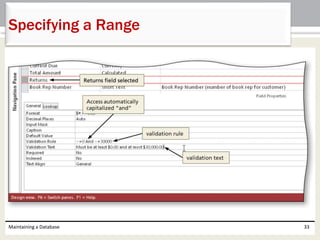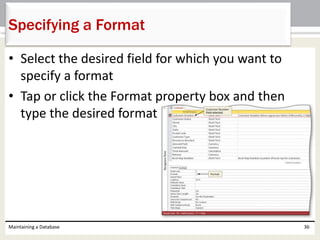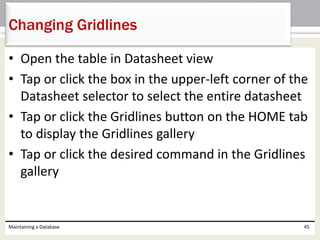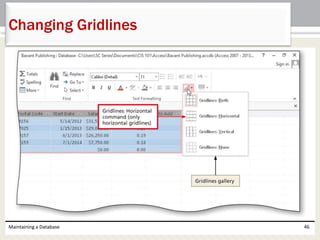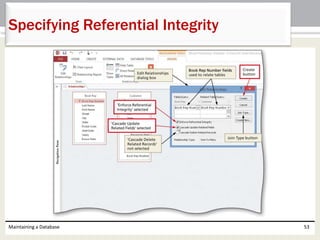This document provides instructions for maintaining a Microsoft Access 2013 database, including how to add, update, filter, and delete records; update table and field properties; create queries; and format reports. Procedures covered include adding new fields, creating lookup fields, specifying validation rules and formats, updating records using forms and queries, filtering records using various criteria, and updating reports to reflect changes in tables. The document contains screenshots to illustrate each step.
